List of Authors
>>About this blog
Recent blog post
|
[rosemary sea]
March 29, 2017 14:00
The rosemary sea is a list of "gifts and I enjoy myself" and cover it.
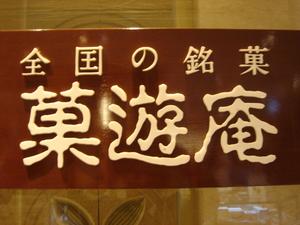 Kayuan has a collection of famous confectionery from all over Japan. Kayuan has a collection of famous confectionery from all over Japan.
Last time, I focused on product information.
This is the history edition.
We visited a shop on the first basement floor of Nihonbashi Mitsukoshi Main Store.
This time, I was also taken care of by Isemoto, the head of the Kayuan shop at Mitsukoshi Nihonbashi Main Store.
In 1950, a historical confectionery manufacturer from all over the country launched the “National Confectionery Industry Cooperative” with the aim of fostering goodwill and technology.
In November of that year, we held a “National famous confectionery Reconstruction Exhibition and Sale” at Nihonbashi Mitsukoshi Main Store. Since this was very popular, it has been held once a year since the second edition of the National famous confectionery Exhibition.
However, since there were too many customers looking forward to this event only once a year, Mitsukoshi thought that a similar project could be made at the permanent sales floor in response to your request.
In November 1984, the “Traditional famous confectionery” section was opened at Nihonbashi Mitsukoshi Main Store in November 198famous confectionery.
Then, the “Traditional famous confectionery” section grew significantly while increasing the number of products handled, and in 1988, it was renamed the current “Kayuan”.
He said that he will continue to focus on carefully selection and assortment so that the excitement of the taste of "delicious", "want to eat again" and "to that person" can be further enhanced.
I'm thrilled. We look forward to seeing you in the future.
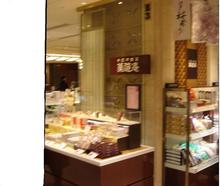 Kayuan Kayuan
1-4-1 Nihonbashi Muromachi 1-4-1 B1F Nihonbashi Mitsukoshi Main Store Main Building
03-3241-3311 (large representative)
Business hours 10:30-19:30
Click here for Kayuan's website ⇒ http://mitsukoshi.mistore.jp/store/common/kayuan/
Click here for the homepage of Nihonbashi Mitsukoshi Main Store ⇒ http://mitsukoshi.mistore.jp/store/nihombashi/
[O'age]
March 27, 2017 09:00
The explanation board at the site of Nagasakiya, a station bound for Choichi Dutch trading post, stands at 4-4-10 Nihonbashi Muromachi. It is an important historical site where many astronomers, doctors, and Dutch scholars visited and interacted with each other to learn the latest science and technology and foreign languages during the Edo period, when the isolation policy was taken. (From "Chuo-ku Monoshiri Encyclopedia")
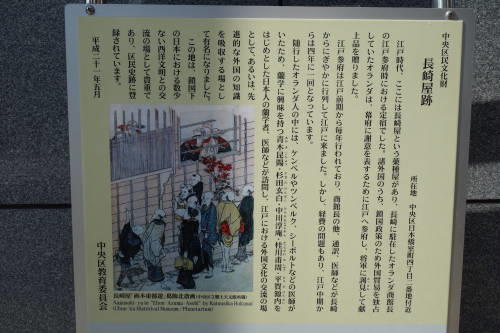
The Nagasakiya building faces south on the front, and the back side (north side) is "Kakotsuki Tau Shinmichi" (Kenkyodo Shindo or Kanetsuto Tangjindo (currently Time Bell Street)). It is presumed that there was a bell tower. Maybe there was a front entrance near the position where the above explanation board stands.
"The bell of Kokumachi can be heard up to red hair (the Netherlands)."
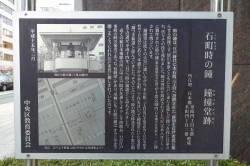 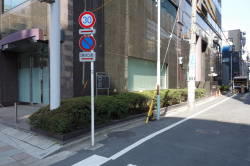
Bronze bells of Kokumachi and preservation destinations (in Jisshi Park)
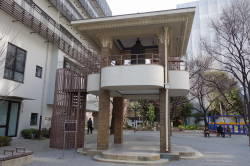 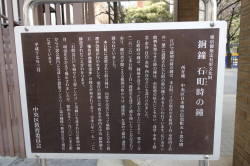
On June 14, 1859 (1859), "Is it a gunshot ship Matsumachi 2-chome (currently Minatomachi, Chuo-ku [now Akashicho? The author O'age] ) ". Shogun is the birthplace of Dutch studies in Edo. In 1771 (1771), Genpaku Sugita and Junnan Nakagawa met the residence of Ryotaku Maeno and said, "Tarher Anatomia, get on the open sea of the" rudder "to the rudder, to the rudder ship ", I couldn't stop by.
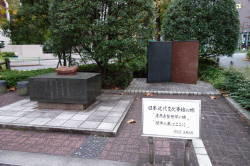 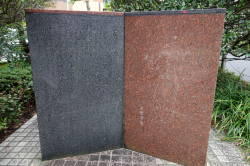
Dutch trading post's trip to Edo-Sanfu was routinely conducted once a year since 1857 (1633), and from 1790 (1790), 166 times every five years, once every four years, until 1850 (1850). In 1850, the inn stopped working, and after the relocation of the gunshot, it changed from an imported goods handling store represented by imported drugs to a store dealing with imported books, guns and other miscellaneous goods, and Nagasakiya changed from "Tang Ginsengza" to "Edo Nagasaki Kaisho". It is said that Genemon, the eleventh head of Nagasakiya, died at headquarters in 1875 (1875).
(Kazuo Katagiri's "Is Edo still a isolation?" Kikkawa Hirobunkan, Seiichi Sakauchi's "Nagasakiya Monogatari" from Ryutsu Keizai University Press)
[Silver]
March 25, 2017 16:00
Take a walk in Tsukuda. Recently, the sun has grown, so I took a walk from Tsukuda to Shintomi-cho in the evening.
I'm going to Tsukuda. We visited Tsukudatendaiko Ikuchizoson and prayed for the health of our grandchildren. A woman from Saitama Prefecture always said that when she comes to her friend's house, she always visits and touches this ginkgo tree that is over 300 years old and returns home.
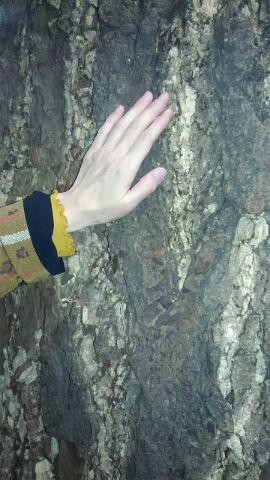
After crossing Tsukuda Kobashi and visiting Sumiyoshi-jinja Shirine, I suddenly felt like I was stopped by something and walked a different path. There was a shrine that seemed to be deeply revered by the locals.
It's Mori Inari Shrine.
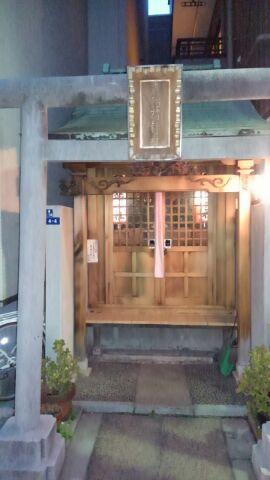
Thank you very much for your time.
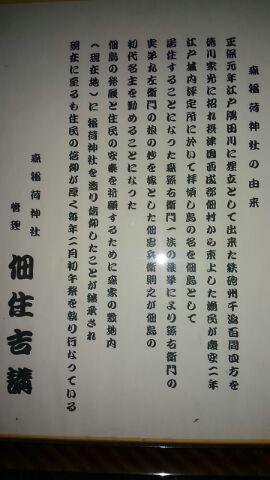
It was a great discovery to get a glimpse of a part of history.
The scenery downstream from Tsukuda-ohashi Bridge on the way back is also tasteful and very good. It's warm, so please go out for a walk in this area as well.
[Silver]
March 24, 2017 09:00
I went to Chuo-ku government office for business purposes, remembering that this place was the Nakayashiki of the Tosa clan in the Edo period.
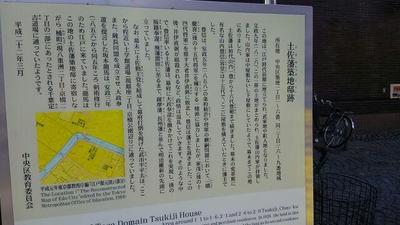
When Ryomaden was aired, on a blog, in June 2010, I decided to walk the course I introduced. Photos are deleted. /archive/2010/06/post-367.html
On the way, while watching the monument of the birthplace of Ginza, the monument of the birthplace of Edo Kabuki, etc., turning left at Tokyo Square Garden and running the Tomioka Silk Mill, a medalion of Katakura Industries. Here are some information on the company's website to celebrate Tomioka Silk Mill's designation as World Heritage. https://www.katakura.co.jp/tomioka.htm
This medalion was displayed on the old building before rebuilding.
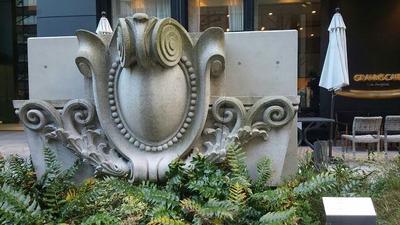
Behind it, the history of Kyobashi is introduced along with photos.
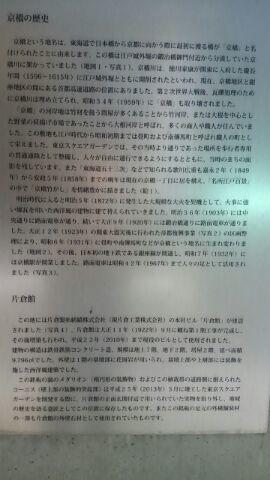
Learn about the history of Kyobashi and head to the next place.
There is an explanation board for "Sadakichi Chiba Dojo" which Sakamoto Ryoma once practiced swordsmanship.
I wondered if Ryoma was in love with Sanako. with Sanako.
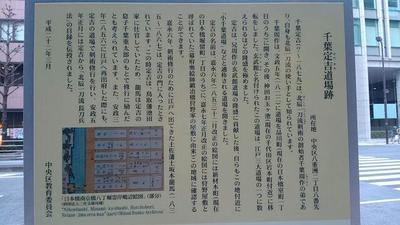
At the intersection of Kajibashi, we confirmed with a picture that the Tokyo International Forum was the Tosa clan's upper residence.
We headed to the Chuo-ku Tourist Information Center in Edgran, Kyobashi, purchased the next new story, and enjoyed  lunch lunch at a restaurant in Edgran. https://www.edogrand.tokyo/index.html https://www.edogrand.tokyo/ at a restaurant in Edgran. https://www.edogrand.tokyo/index.html https://www.edogrand.tokyo/
[Marsha Horiuchi of Edo]
March 18, 2017 18:00
Meibashi "Nihonbashi" Preservation Society We have participated in a special co-sponsored seminar "Life in Edo depicted in Kidai Shoran" by the Nihonbashi Regional Renaissance 100-year Planning Committee. The lecturer is Tomoko Eriguchi, curator of the Edo Tokyo Museum.
Since I saw this picture scroll duplication (approximately 17 meters) for the first time at the underground concourse in front of Mitsukoshi Station in March 2013 (1.4 times larger than the real thing), I always wanted to slip back in time in the Edo period Thank you very much for having a very enjoyable and exciting day.
I will scrap and write about the contents, but now an exhibition is being held at Edo Expo until April 9 under the title "Edo and Beijing 18th Century Year and Living".
1) It depicts the prosperity of the late Edo period (1805_1805), was discovered in Germany in 1995 and is located in the Orient Museum of the Berlin State Museums. This is my second trip home
2) The real thing is a scroll, and the title is "Kidai Shoranten". In other words, is there anything else (the earth, people)? Nobody knows, the author is still unknown.
3) By the way, there is a picture of a box written as Kaikoin in both countries, which is the contents. Since Edo had a lot of housework in the rabbit, the scenery of prosperity before the fire, a fire tower, a water tub, and fire water are also depicted. About 90 shops and people and animals on a 760-meter street from Kanda's Imagawa Bridge (now Chuo-dori) to Nihonbashi (now Chuo-dori) are drawn with a light touch of 1671.
4) A peek at a white wall shop, a peach blossom shop, a sushi shop, a small shop, a small shop, a small shop, a small shop, a suck shop, a small shop, a suck shop, a swirl-shaped billboard, a swirl-shaped billboard, a swirl-shaped shop, a suck shop, a suck shop, an oil-cooled chicken shop, adorned shop, adorned shop, adorned shop, adorned shop, adorned shop, adorned shop, adorned shop, adorned shop, aven shop, adorned shop, avenir, aven shop, adored shop, aven shop, a small shop, a small shop, adored shop, adorned with an oiled shop, adored shop, adorned with a
5) It seems that permission was required to set up a signboard for the store, and it also depicts the atmosphere of a cup with the people of Minamicho magistrate's office.
6) My father pulls the hand of a child going to Terakoya and carries a study desk on his shoulder. What a healthy landscape, "Let's study Chant!" It's said to be a great place.
7) Near Nihonbashi, there seems to be a green shop, a fish shop (bonito, abalone), and a high bill that still has "Kirishitan Goho" written. The guardhouse at the base of the bridge has a community association organization, a torii mark that prohibits standing, a scene of fighting, and a figure of children swimming on the Nihonbashi River.
8) The touch of this painting does not seem to be seen in Edo Nishiki-e. Here, the comparison with the parade painting of "Manju Morinori" (a procession walking from the palace to Forbidden City) to celebrate the 60th anniversary of the Qing Dynasty of China's Qing Dynasty is very similar to the human gestures in several scenes.
At the Edo Expo, there is also a display of the 80-year-old celebration scenery of his grandson, the Emperor Inui, and this parade was also a reference for some Edo people's gestures. ?
Well, everyone, I hope you can go back in time.
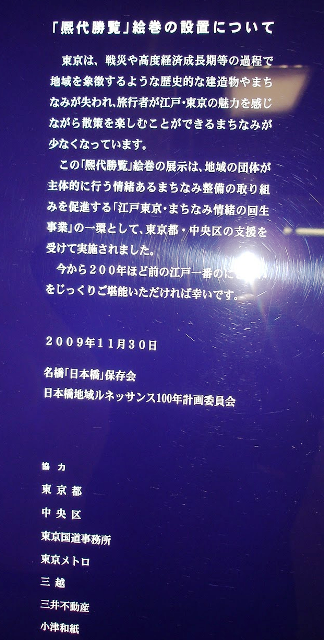
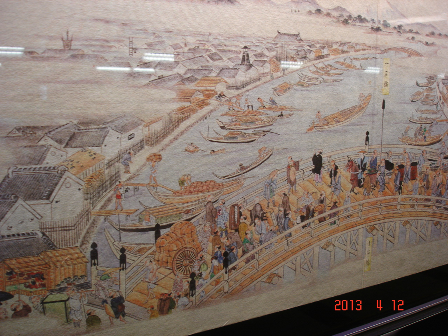 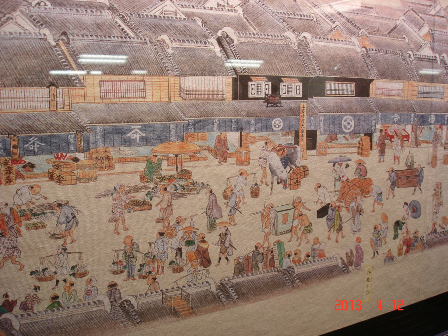 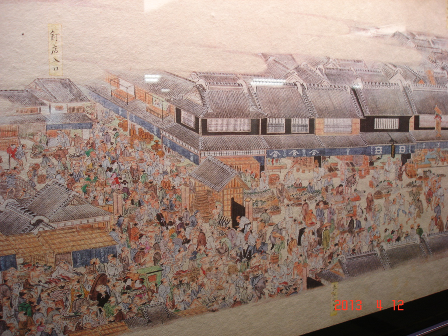
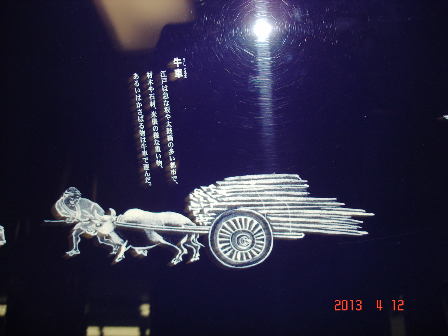 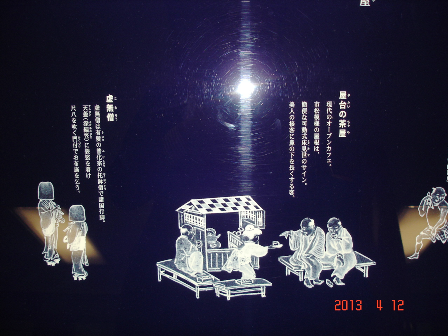 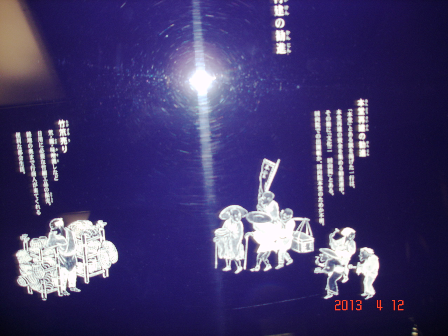 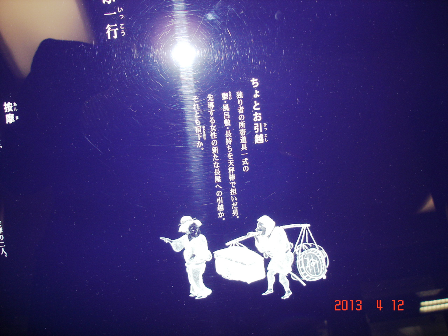
[Tachibana]
March 16, 2017 16:00
When it comes to Kotohira Shrine, many people think of Kotohira Shrine in Toranomon, Minato-ku in Tokyo. This shrine was rebuilt in 2004 and has become a facility integrated with Toranomon Kotohira Tower.
The main shrine of Kotohira Shrine is a shrine in Kotohira-cho, Kagawa Prefecture. In the Edo period, ship distribution became popular, and Kotohira worship was spread throughout Japan by shipping companies and merchants, and branch offices were created throughout Japan.
One of them is Kotohira Shrine, which was founded in Yagenbori (now Higashi Nihonbashi 2-chome) in Tenmei 3 (1783). He was revered as a guardian deity of the sailors of the Sumida River, and after that, along with the development of the town, he gathered the religion of merchants, especially those who work in the food and beverage industry and entertainment.
At present, there are no shrines in Yagenbori, but it was transferred to the grounds of Kanda Myojin in 1929 and became the subsidiary shrine of Kanda Myojin. It is enshrined together with Mishuku Inari Shrine.
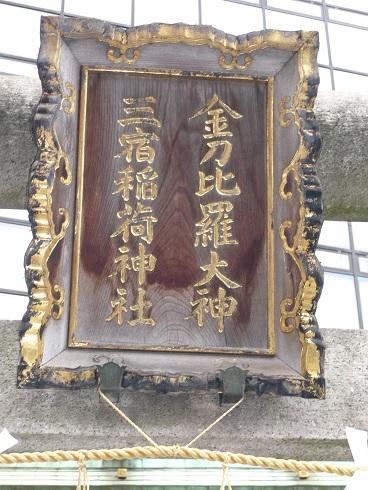
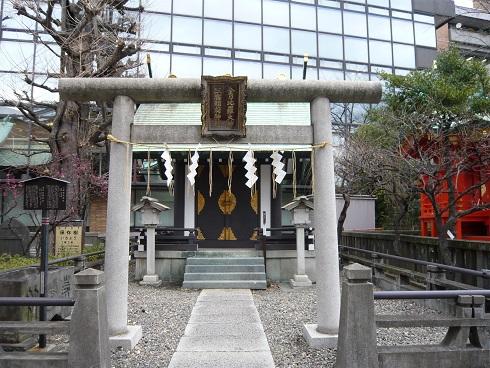
In addition, there is Suehiro Inari Shrine in the precincts of Kanda Myojin, which was also enshrined by a bonito wholesaler in Nihonbashikobunacho, but is now relocated as the subsidiary shrine of Kanda Myojin.
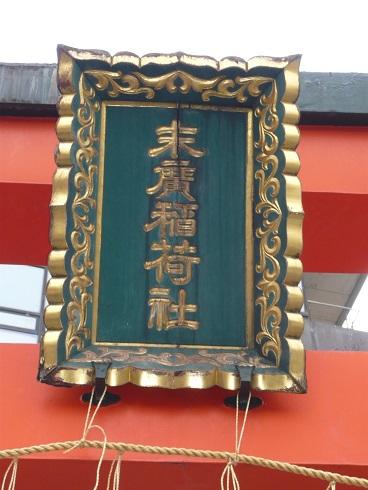 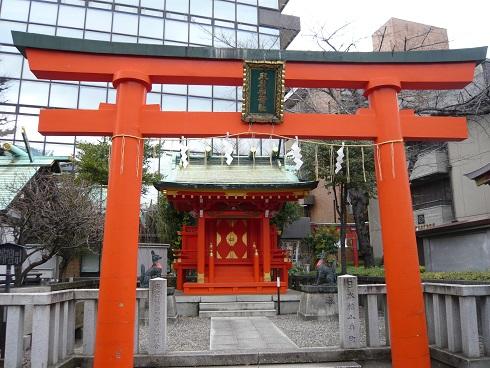 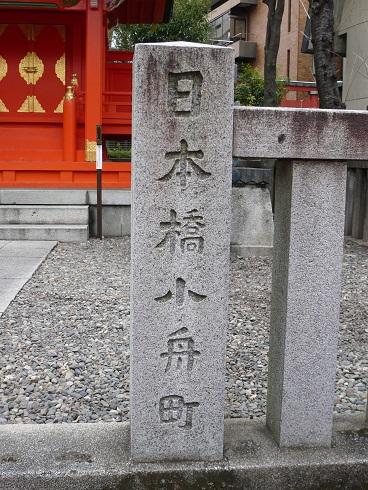
Until now, I have written that fish riverbank water shrine and Kobunamachi Yakumo Shrine are enshrined in Kanda Myojin. Kanda Myojin itself is Chiyoda-ku at its current address, but it is clear that there is a deep connection between Chuo-ku and Kanda Myojin, just as most towns on the north side of Nihonbashi River in Chuo-ku are still shrine parishioner in Kanda Myojin.
|
Links
|
 Kayuan has a collection of famous confectionery from all over Japan.
Kayuan has a collection of famous confectionery from all over Japan.





















